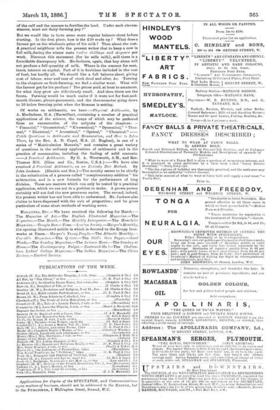How to Make the Land Pay. By Henry P. Dander,
1d.A. (Long- mans.)—Mr. Dunster gives two chapters to dairy-farming and its products, one each to bacon and cognate substances, poultry, and rabbits, four to fruit, and three to lbwers. He then deals with vege- tables and sugar-beet, and finally discusses a number of miscellaneous crops, devoting bis last three chapters to "Ensilage," "Bee-keeping," and "Fish-farming." He begins by stating the fact that we now pay thirty-eight million pounds for articles of food (other than various kinds of corn) which, for some reason or other, we do not produce in our own country. Part of this expenditure, no doubt, is inevitable. Some fruits, e.g., we cannot grow here at all ; and much we must import, if we want it early in the year. Still, a large balance is left of what we fail to grow here for want of enterprise or skill. Mr. Danger thus has a large field before him. How far he is right in his details we cannot pretend to judge. His figures are not always
definite enough. Here, for instance, is what he says about the cost and profit of cow-keeping :—
"In a. well-managed dairy, the yearly produce of an average cow, at present prices, not including the value of her calf, cannot be stated at leas than 220. We have before us the account of a dairy of 100 cows, where the average per head is MO 17s. 6d. Now, taking the 37 weeks of winter feeding at Mr. Blunt's estimate of 5s. per week 53.—and allowing 4s. per week for summer pasturage of 15 weeks, we have 212 5s. as the whole expense of feeding, leaving for- each cow kept a profit of 27 15s. per year, independent of the value
of the calf and the manure to fertilise the land. Under such circum- stances, must not dairy-farming pay I"







































 Previous page
Previous page